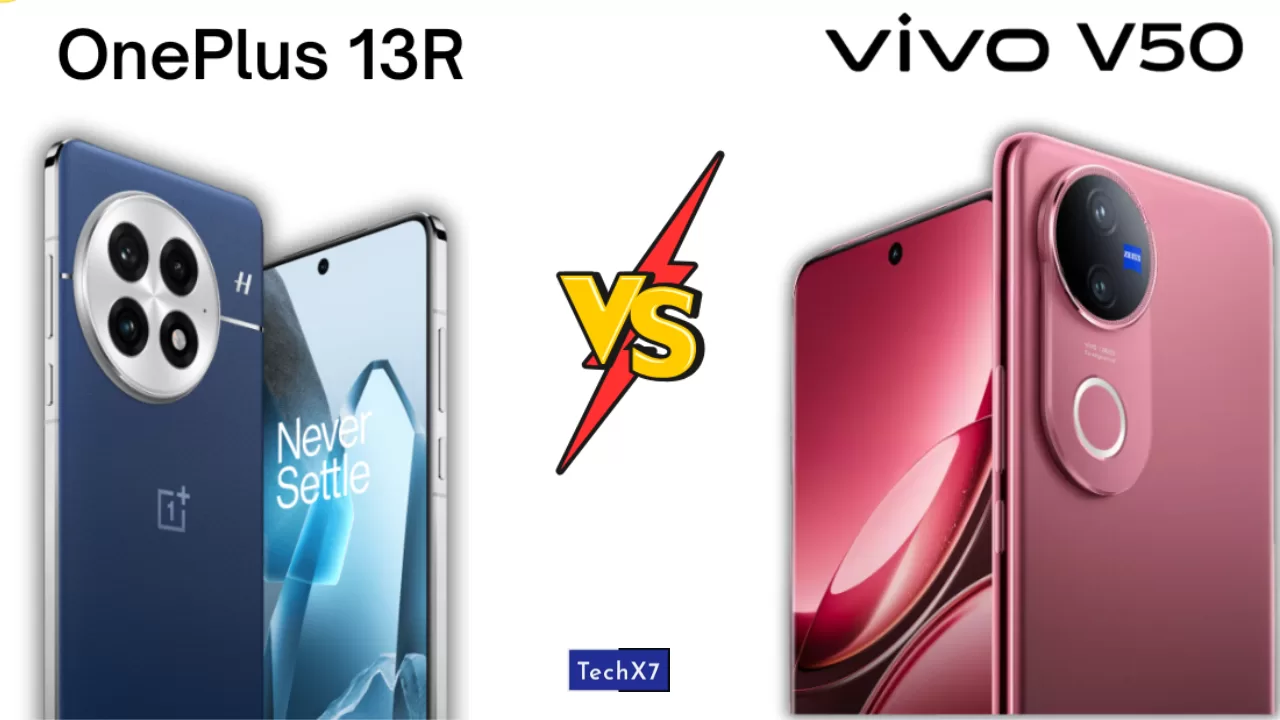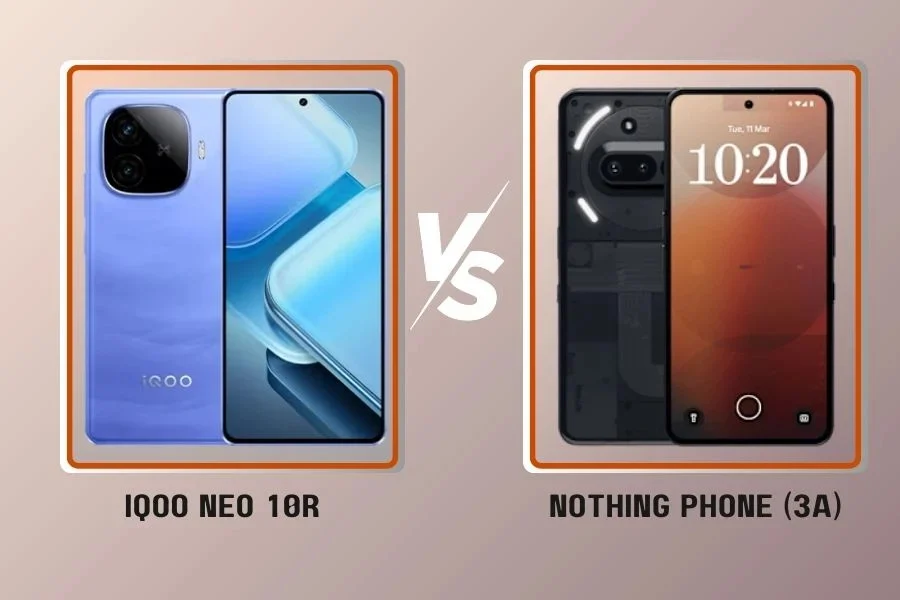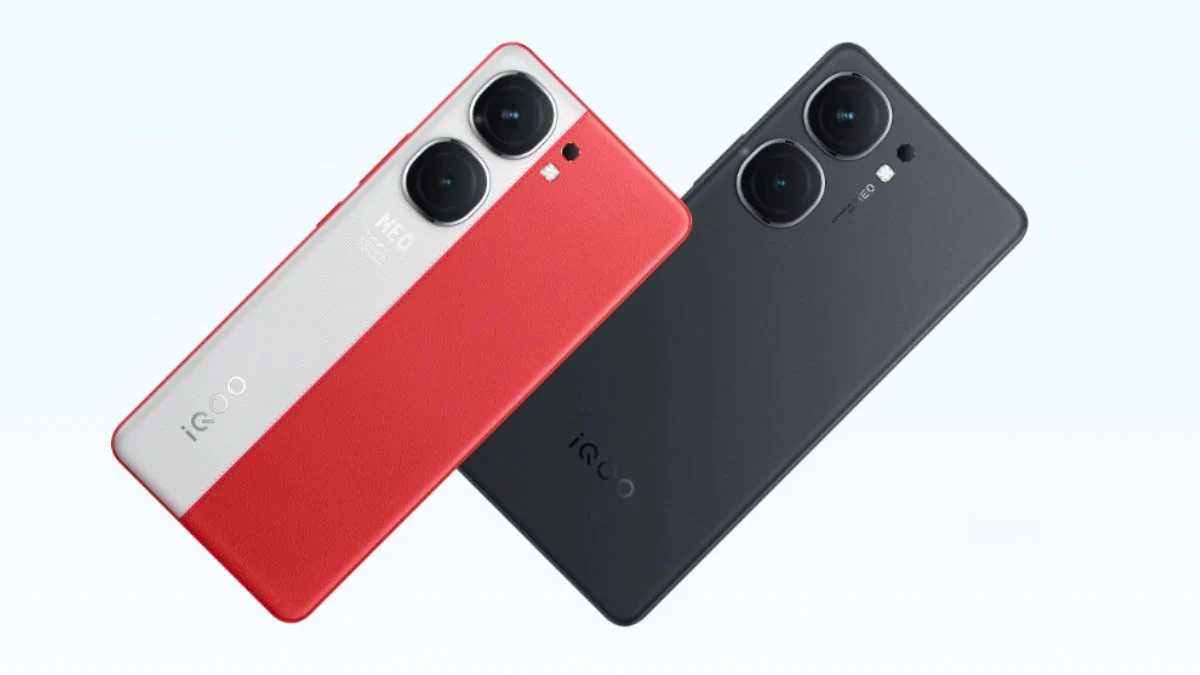The mid-range flagship segment just got more competitive. Earlier this year, OnePlus introduced the 13R, bringing a mix of flagship-level performance and premium features at a relatively accessible price. Now, Vivo has entered the ring with the V50, offering a sleek design, improved durability, and a strong focus on camera capabilities.
With both devices positioned as premium mid-range options, the question remains-which one is the better buy? Let’s break it down.
Design and Build
The Vivo V50 is all about being sleek and lightweight. At 7.4mm thickness and weighing 189g, it is noticeably slimmer than most phones in this segment. It also boasts an IP68 and IP69 rating, making it one of the most durable smartphones available, as it can withstand high-pressure water jets and immersion up to 1.5 meters for 30 minutes.
In contrast, the OnePlus 13R is heavier at 206g and slightly thicker at 8mm. It features an aluminum frame with a glass back, making it feel more premium, but its IP65 rating only protects against dust and low-pressure water jets, meaning it isn’t as rugged as the Vivo V50.
If you prefer a lightweight phone that’s highly water-resistant, the Vivo V50 is the better option. But if you value a solid metal-and-glass construction, the OnePlus 13R feels more premium in hand.
Display
Both phones feature 6.7-inch+ AMOLED displays with a 120Hz refresh rate for smooth scrolling and gaming. However, the OnePlus 13R edges ahead with a higher resolution of 1264 x 2780 pixels (~450 ppi), compared to the Vivo V50’s 1080 x 2392 pixels (~388 ppi). This means sharper text and crisper visuals on the OnePlus 13R.
Additionally, the OnePlus 13R comes with an LTPO 4.1 AMOLED panel, allowing dynamic refresh rate adjustments to improve battery efficiency. It also supports Dolby Vision and Ultra HDR for enhanced contrast and colors. The Vivo V50 does offer a peak brightness of 4500 nits, which is impressive, but the OnePlus 13R offers similar brightness levels with better HDR support.
If display quality is a priority, the OnePlus 13R has the advantage.
Performance
The Vivo V50 runs on the Snapdragon 7 Gen 3 chipset, while the OnePlus 13R is powered by the Snapdragon 8 Gen 3. This makes a huge difference in raw power and efficiency.
The OnePlus 13R’s Snapdragon 8 Gen 3 features a higher clock speed of 3.3GHz and a more advanced Adreno 750 GPU, making it better suited for gaming, multitasking, and demanding applications. Meanwhile, the Vivo V50’s Snapdragon 7 Gen 3 is more than capable for everyday use but falls short when it comes to heavy gaming and intensive workloads.
Additionally, the OnePlus 13R features UFS 4.0 storage, which is significantly faster than the Vivo V50’s UFS 2.2 storage, meaning apps load faster and file transfers are quicker on the OnePlus device.
For users who need flagship-level performance, the OnePlus 13R is the better pick. But if your usage is more casual, the Vivo V50 is still a solid performer.
Cameras
Both smartphones come with 50MP main cameras with optical image stabilization (OIS), ensuring clear and stable shots. However, their camera setups differ:
Vivo V50: Dual-camera system with a 50MP main sensor and a 50MP ultra-wide lens, enhanced by ZEISS optics for improved image clarity and color accuracy.
OnePlus 13R: Triple-camera system with a 50MP main sensor, a 50MP 2x telephoto lens, and an 8MP ultra-wide sensor, providing added versatility for zoom and portrait shots.
The OnePlus 13R’s telephoto lens offers 2x optical zoom, making it more useful for close-up shots and portraits. However, the Vivo V50 benefits from ZEISS tuning, which enhances image processing, reduces distortion, and provides more natural colors.
For selfies, the Vivo V50 holds the advantage with its 50MP front camera, outperforming the 16MP front shooter on the OnePlus 13R in both resolution and autofocus capabilities.
If you prioritize selfies and ultra-wide photography, the Vivo V50 is the better pick. But if you prefer a versatile rear camera setup with optical zoom, the OnePlus 13R is the way to go.
Battery and Charging:
Both smartphones come with 6000mAh batteries, ensuring all-day battery life. The Vivo V50 supports 90W wired charging, while the OnePlus 13R offers 80W wired charging. Both phones don’t support wireless charging.
Software: AI Features and Long-Term Updates
Both the Vivo V50 and OnePlus 13R run on Android 15 with their respective custom skins-Funtouch OS 15 for Vivo and OxygenOS 15 for OnePlus. While both provide a suite of AI features, neither offers a stock Android experience, as both skins come with heavy customization.
The Vivo V50 will receive three major OS upgrades and four years of security updates, ensuring it stays relevant for a decent period.
Meanwhile, the OnePlus 13R offers a longer software lifespan with four years of OS updates and six years of security patches.
Pricing
The Vivo V50 comes in three configurations:
- 8GB + 128GB – ₹34,999
- 8GB + 256GB – ₹36,999
- 12GB + 512GB – ₹40,999
It is available in Rose Red, Starry Night, and Titanium Grey color options.
The OnePlus 13R has a higher starting price:
- 12GB + 256GB – ₹42,999
- 16GB + 512GB – ₹49,999
It is available in Astral Trail and Nebula Noir colors.
Which One Should You Buy?
The Vivo V50 is the better pick if you prefer a sleek design, water resistance, ZEISS-enhanced cameras, and a high-resolution selfie shooter.
The OnePlus 13R, on the other hand, offers superior performance with the Snapdragon 8 Gen 3, a sharper display, longer software support, and a more versatile camera system with a telephoto lens. It’s the ideal option for power users who want flagship-like performance at a mid-range price.
Both phones bring solid value, but Vivo excels in design and cameras, while OnePlus leads in performance and longevity. Your choice depends on what matters most to you.




